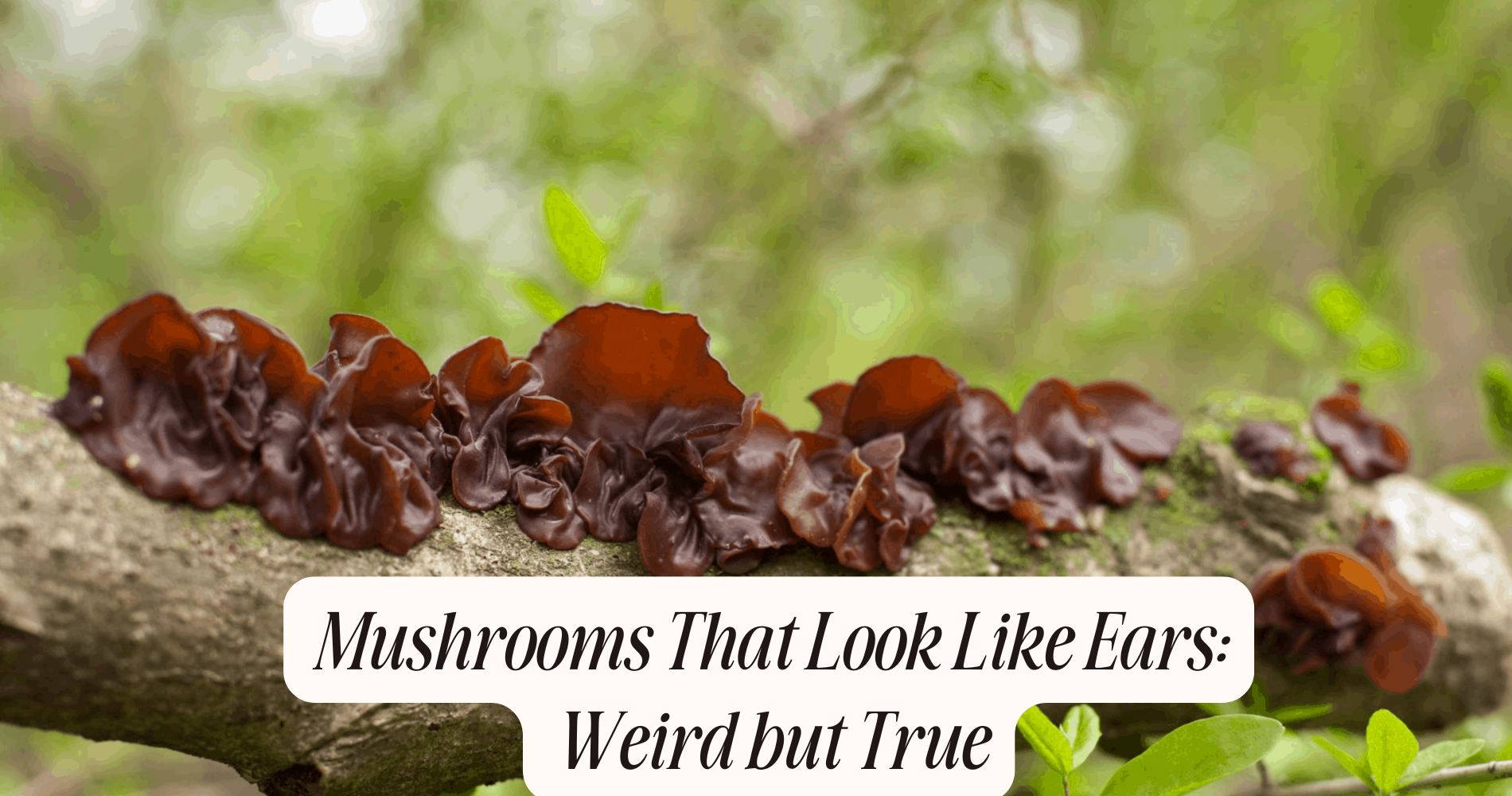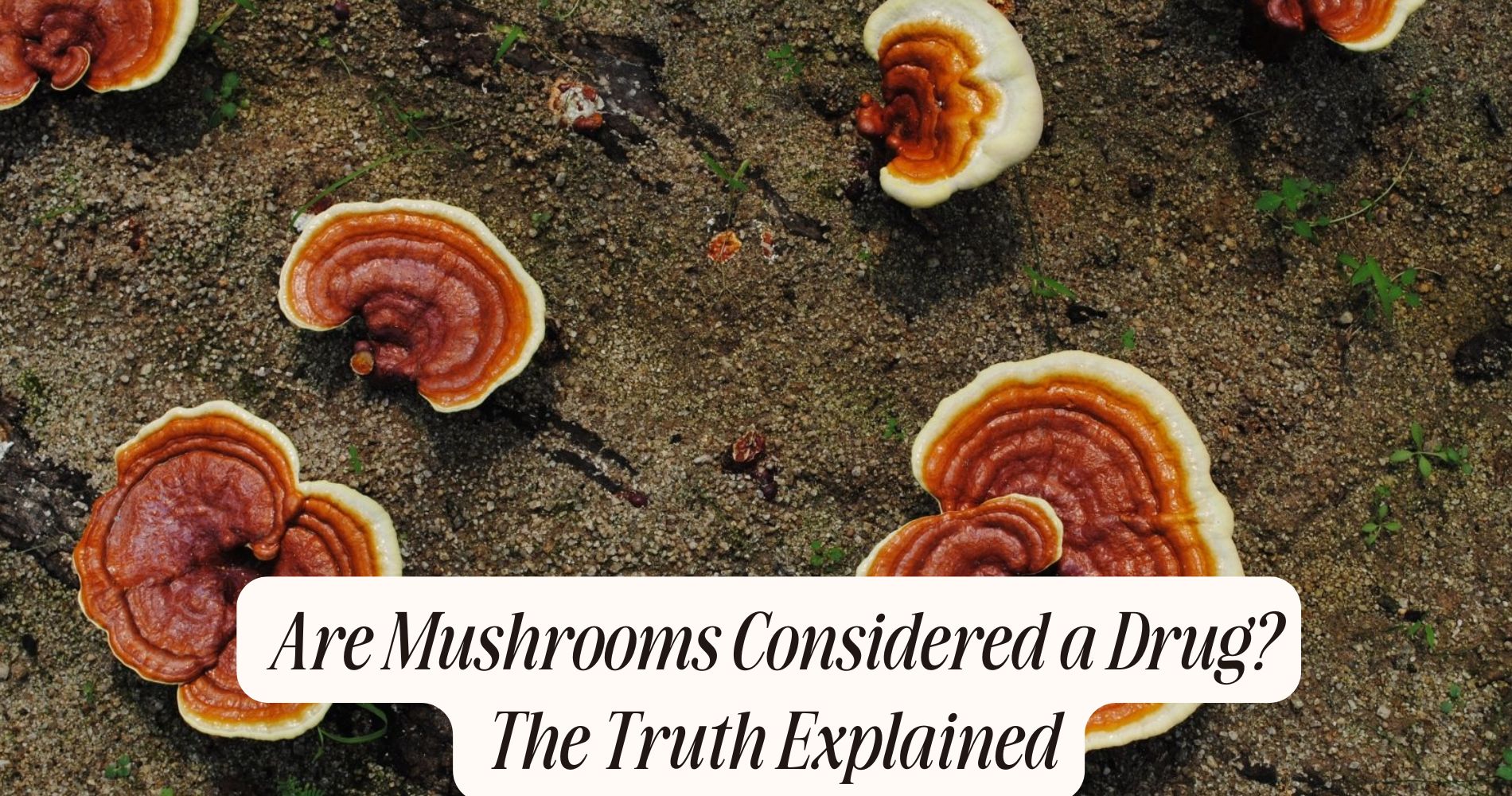
Mushrooms That Look Like Ears: Weird but True
If you've ever spotted mushrooms that look like ears, you're not imagining things! These fascinating fungi, known as ear mushrooms, include varieties like the jelly ear and wood ear. Their gelatinous texture and ear-like shape make them unique. Typically found on decaying wood, they play a crucial role in nutrient cycling and support various ecosystems. Besides their ecological importance, ear mushrooms are popular in Asian cuisines, adding flavor to dishes like stir-fries and soups. But beware, not all ear mushrooms are edible, so proper identification is key. Stick around to uncover more intriguing facts about these peculiar fungi!
What Are Ear Mushrooms?
Ear mushrooms, often referred to as "jelly ear" or "wood ear," are fascinating fungi that resemble the shape of human ears. When you're out foraging or exploring nature, you might come across these unique mushrooms growing on decaying wood or dead trees.
Their gelatinous texture and ear-like form make them distinctive and easy to spot once you know what to look for.
For ear mushroom identification, focus on their color, which ranges from dark brown to black, and their smooth, shiny surface. You'll typically find them in clusters, attached to the wood with a cup-like shape.

When examining the underside, you'll notice that it's not gilled like many other mushrooms but rather has a smooth or slightly wrinkled appearance.
As for ear mushroom habitats, they thrive in moist, shaded areas, often in forests or woodlands. They prefer hardwood trees like oak and elm, where they break down the wood, contributing to the ecosystem.
Common Types of Ear Mushrooms
Several common types of ear mushrooms can be found in wooded areas, each with unique characteristics. One popular variety is the wood ear mushroom (Auricularia auricula-judae), known for its gelatinous texture and slight crunch. It's a staple in Asian cuisine, often used in soups and stir-fries.
Another type is the cloud ear mushroom (Auricularia polytricha), which is also edible and has a more pronounced flavor, making it a great addition to various dishes.
When foraging for these fungi, it's crucial to remember some key tips. First, always make sure you're identifying mushrooms correctly, as some can be toxic. Look for the characteristic ear shape and color, ranging from dark brown to a translucent gray.
Foraging in areas with plenty of moisture and decaying wood increases your chances of finding these edible varieties.
If you're new to mushroom foraging, consider joining a local foraging group or taking a guided tour. This way, you'll learn from experienced foragers and gain confidence in identifying edible mushrooms.
Enjoy the thrill of the hunt and the delicious rewards that come with it!
Unique Characteristics of Ear Mushrooms
Mushrooms resembling ears possess distinctive features that set them apart from other fungi. One of the most striking characteristics is their unique texture variations. Some ear mushrooms have a smooth, gelatinous feel, while others display a more wrinkled or frilled surface, making them visually intriguing.
These differences not only enhance their appearance but also contribute to their adaptability in various environments.
You'll also notice that ear mushrooms exhibit fascinating growth patterns. They often thrive on decaying wood or damp forest floors, where they can absorb nutrients effectively. This choice of substrate reflects their role in decomposition, breaking down organic matter and recycling nutrients back into the ecosystem.

In clusters or solitary formations, these fungi can appear in an array of colors, ranging from earthy browns to vibrant reds, adding to their charm.
As you explore the world of ear mushrooms, keep an eye out for these unique characteristics. Their texture variations and growth patterns not only make them stand out visually but also highlight their ecological roles.
Embrace the weirdness of these fungi and appreciate their distinct place in nature!
Ecological Importance of Ear Mushrooms
Ear mushrooms play an essential role in nutrient cycling within their ecosystems, breaking down organic matter and returning vital nutrients to the soil.
You might be surprised to learn that they also provide habitat for various forms of wildlife, supporting biodiversity.
Understanding their ecological importance helps highlight the interconnectedness of nature.
Nutrient Cycling Role
Often overlooked, ear mushrooms play an important role in nutrient cycling within their ecosystems. You mightn't realize it, but these fungi are natural recyclers, breaking down organic matter like dead wood and leaf litter. As they decompose this material, they release essential nutrients back into the soil, enhancing its overall health.
When ear mushrooms metabolize their food, they contribute greatly to nutrient absorption in the surrounding environment. This process enriches the soil, promoting a balanced ecosystem where plants can thrive. Healthy soil, in turn, supports diverse plant life, which is vital for maintaining biodiversity.
Additionally, by aiding in the decomposition process, ear mushrooms help maintain soil structure and fertility. This means that the nutrients they release not only benefit the immediate area but also support the wider ecosystem by fostering growth and resilience among various plant species.
Next time you spot these unique mushrooms, remember their essential role in nutrient cycling. They're not just a quirky addition to the forest floor; they're key players in sustaining the health of their ecosystems. Embracing their ecological importance can help you appreciate the intricate web of life surrounding us.
Habitat for Wildlife
While you mightn't realize it, ear mushrooms provide essential habitats for various wildlife species. These unique fungi create microhabitats that support a range of organisms, from insects to small mammals.
When you spot ear mushrooms in the wild, you're witnessing a crucial component of the ecosystem interactions happening right beneath your feet.
By breaking down decaying wood and organic matter, ear mushrooms enhance the soil quality, which in turn supports diverse plant life. These plants act as food sources and shelter for various animals, thereby enriching the wildlife habitats in the area.

Insects, like beetles and ants, often take refuge in the crevices of ear mushrooms, while birds and small mammals visit to forage for food.
Moreover, the moisture retention properties of ear mushrooms create a humid environment that attracts various species. This interconnectedness highlights how ear mushrooms contribute to the overall health of their ecosystem.
Culinary Uses of Ear Mushrooms
Mushroom dishes featuring the unique texture and flavor of ear mushrooms have become a favorite among chefs and home cooks alike.
These mushrooms, particularly the popular wood ear and black fungus varieties, add a delightful crunch to stir-fries and soups. You'll find that ear mushrooms absorb flavors beautifully, making them a versatile ingredient in various cuisines.
When you're exploring ear mushroom recipes, try incorporating them into Asian dishes like hot and sour soup or spring rolls. Their subtle, earthy taste complements the spices and sauces perfectly.
You can also toss them into salads for an unexpected twist, adding both texture and nutrition.
For a comforting meal, consider a savory ear mushroom risotto, where the mushrooms infuse creamy rice with their unique flavor.
If you enjoy experimenting, you can even use dehydrated ear mushroom varieties, rehydrating them in warm water to enhance their flavor and texture in your dishes.
Whether you're sautéing them with garlic or adding them to a hearty stew, ear mushrooms are sure to elevate your culinary creations.
Embrace their versatility, and you'll find that they can transform any dish into a flavorful masterpiece.
Myths and Facts About Ear Mushrooms
When it comes to ear mushrooms, you'll find a mix of fascinating myths and solid facts.
These unique fungi, known as Auricularia, hold cultural significance in many traditions and boast impressive medicinal benefits.
However, it's time to clear up some common misconceptions surrounding them.
Cultural Significance of Auricularia
Auricularia, often referred to as ear mushrooms, holds a fascinating place in various cultures around the world. In many Asian cultures, these mushrooms are celebrated not just for their unique appearance but also for their rich cultural symbolism. They often represent flexibility and resilience, qualities admired in both nature and human life.
You might be surprised to learn that in some communities, Auricularia is thought to bring good luck, fostering a sense of community and connection among those who share its culinary delights. Traditional uses of ear mushrooms extend beyond mere culinary applications; they frequently appear in cultural rituals and celebrations, symbolizing abundance and nourishment.
In Chinese cuisine, for example, ear mushrooms are prized for their texture and ability to absorb flavors, often featured in festive dishes. Similarly, in Japanese culture, they're used in traditional soups and salads, enhancing both flavor and symbolism on the dining table.
Whether enjoyed in a meal or revered for their significance, Auricularia mushrooms bridge the gap between nature and cultural heritage, reminding us of the interconnectedness of food, tradition, and identity.
Medicinal Benefits Explored
The cultural significance of ear mushrooms extends beyond their symbolic value; they also boast a range of medicinal benefits that are worth exploring. In traditional medicine, these mushrooms have been used for centuries to promote overall health. You might be surprised to learn that they contain polysaccharides, which can enhance your immune system. This means they could help your body fight off infections more effectively.

Additionally, ear mushrooms are rich in antioxidants. These compounds combat oxidative stress in your body, potentially reducing the risk of chronic diseases. You may also find that they support cardiovascular health by improving circulation and lowering cholesterol levels.
Another fascinating aspect is their potential anti-inflammatory properties. If you suffer from conditions like arthritis, incorporating ear mushrooms into your diet could provide some relief. Many people appreciate their unique texture and flavor as a bonus.
When it comes to health benefits, ear mushrooms are versatile. From soups to stir-fries, adding them to your meals is an easy way to tap into their medicinal qualities. Embracing ear mushrooms could be a simple step toward enhancing your well-being while enjoying their culinary delights.
Common Misconceptions Debunked
Many people have misconceptions about ear mushrooms that can lead to confusion about their uses and benefits. One common myth is that all ear mushrooms are edible and medicinal. While many species, like the popular wood ear, are safe to consume, others can pose serious health risks. Misidentification risks are significant, as some lookalikes can be toxic.
Another misconception stems from their folklore origins. You might hear tales suggesting that these mushrooms have magical properties or can cure various ailments. While they do have medicinal benefits, like boosting immune function, it's crucial to ground these claims in scientific evidence rather than folklore.
People often believe that ear mushrooms only grow in specific climates, but they can thrive in diverse environments, found in both temperate and tropical regions.
Additionally, some think they only appear on decaying wood, but they can also grow on living trees, which adds to the confusion.
Experience the Benefits of Functional Mushrooms with SUPER MUSHROOM GUMMIES
While mushrooms that look like ears are fascinating, their benefits go beyond appearances—just like Well Gummies' SUPER MUSHROOM GUMMIES. Packed with 10 functional mushroom types, these vegan gummies are designed to support your immune system, enhance focus, and provide sustained energy. With a fresh wild berry flavor, they’re as delicious as candy and incredibly convenient to use. Enjoy the power of mushrooms without the need for cooking or foraging, and feel the difference in your daily wellness routine—no jitters, no crash, just balanced energy and clarity!
Frequently Asked Questions
Can Ear Mushrooms Be Grown at Home?
Yes, you can grow ear mushrooms at home! By using proper growing techniques and suitable substrates, you'll enjoy successful home cultivation. Just make certain you maintain the right humidity and temperature for ideal growth.
Are Ear Mushrooms Safe for Pets?
If you're wondering about ear mushrooms and their safety for pets, some can cause mild reactions. Always check for ear mushroom toxicity, as your furry friend might react differently based on their individual sensitivity.
How Do You Identify Edible Ear Mushrooms?
To identify edible ear mushrooms, look for smooth, gelatinous caps and a rich brown color. Use identification tips like checking for gills underneath and comparing with known edible varieties to ascertain safety. Always consult experts!
What Environments Do Ear Mushrooms Thrive In?
Ear mushrooms thrive in forest habitats where moisture levels are high. You'll often find them on decaying wood or damp soil, as they prefer shaded areas with plenty of organic matter to support their growth.
Do Ear Mushrooms Have Any Medicinal Properties?
Yes, ear mushrooms possess healing properties and have traditional uses in various cultures. You'll find them used for boosting immunity and promoting overall health, making them a valuable addition to natural remedies and culinary dishes.
Conclusion
To summarize, ear mushrooms are fascinating fungi that not only add intrigue to our natural world but also play significant roles in ecosystems and cuisine. From their unique shapes to their culinary versatility, these mushrooms are more than just a curious sight. Next time you spot them, you'll appreciate their ecological importance and delicious potential. So, whether you're foraging or cooking, you're sure to find something special in these ear-shaped wonders!




